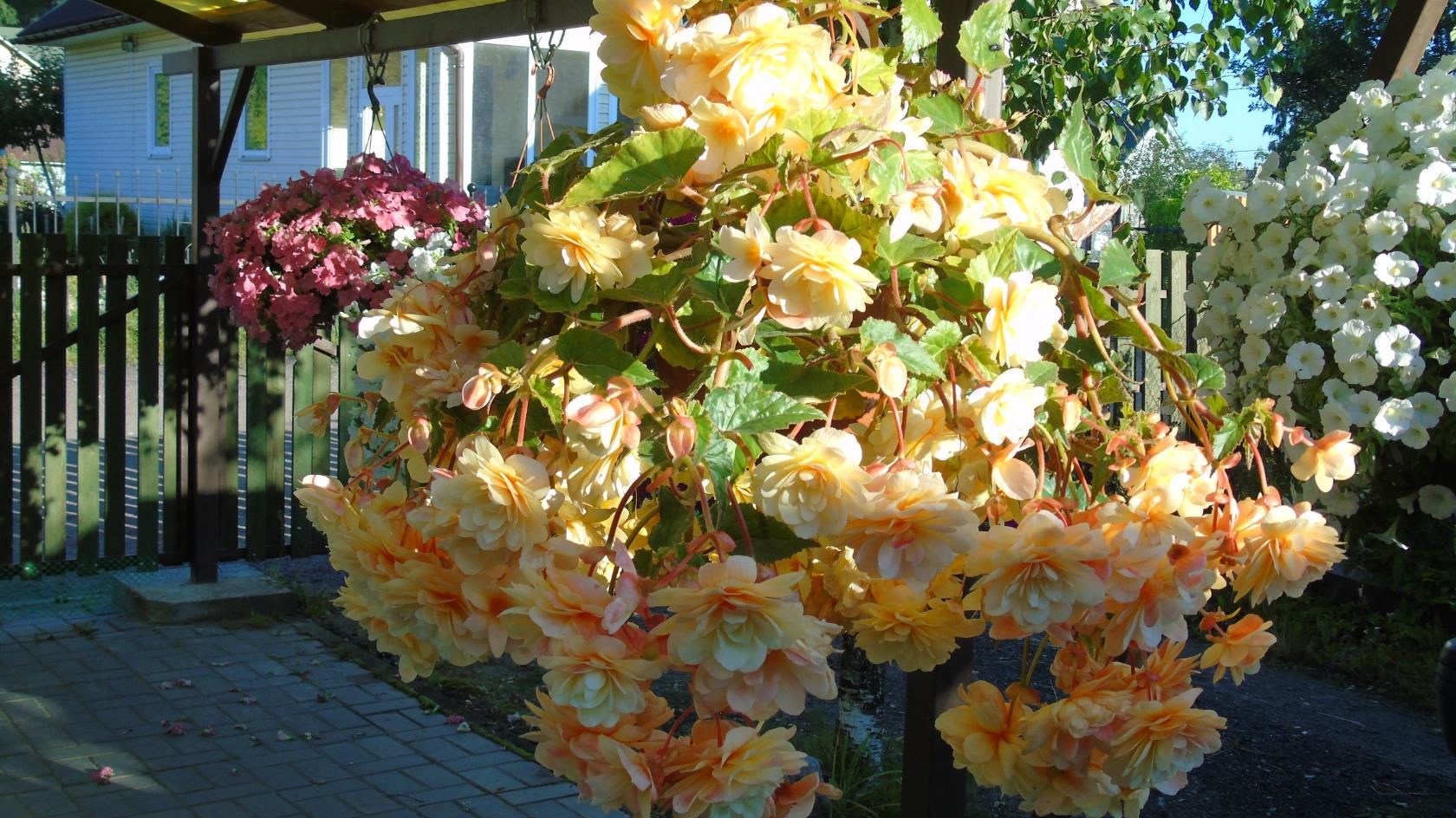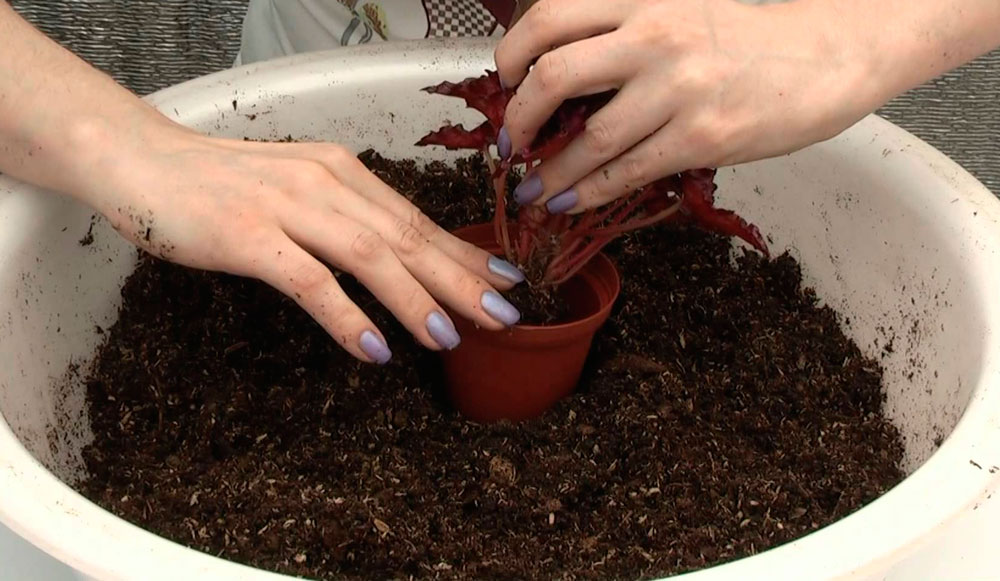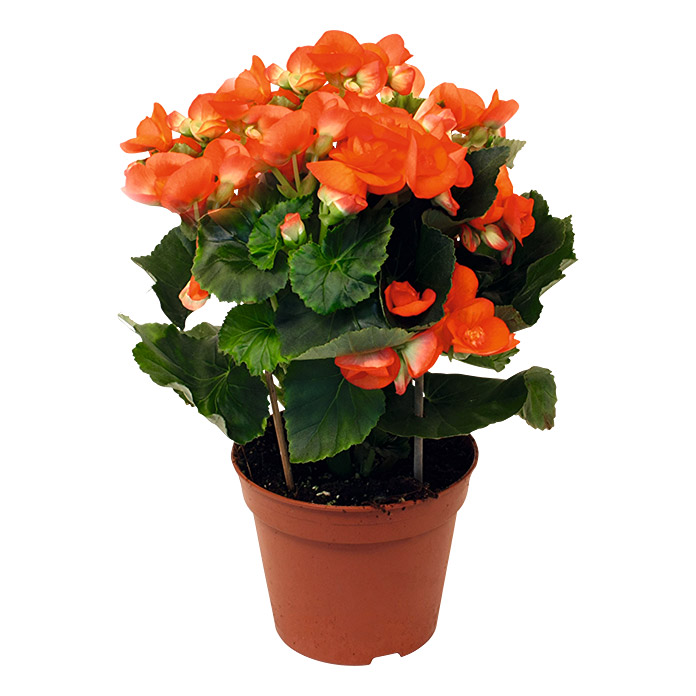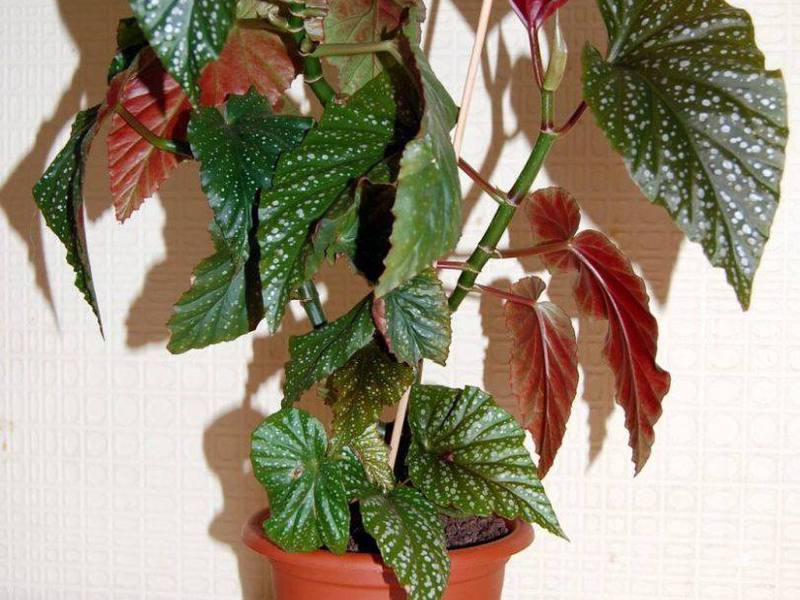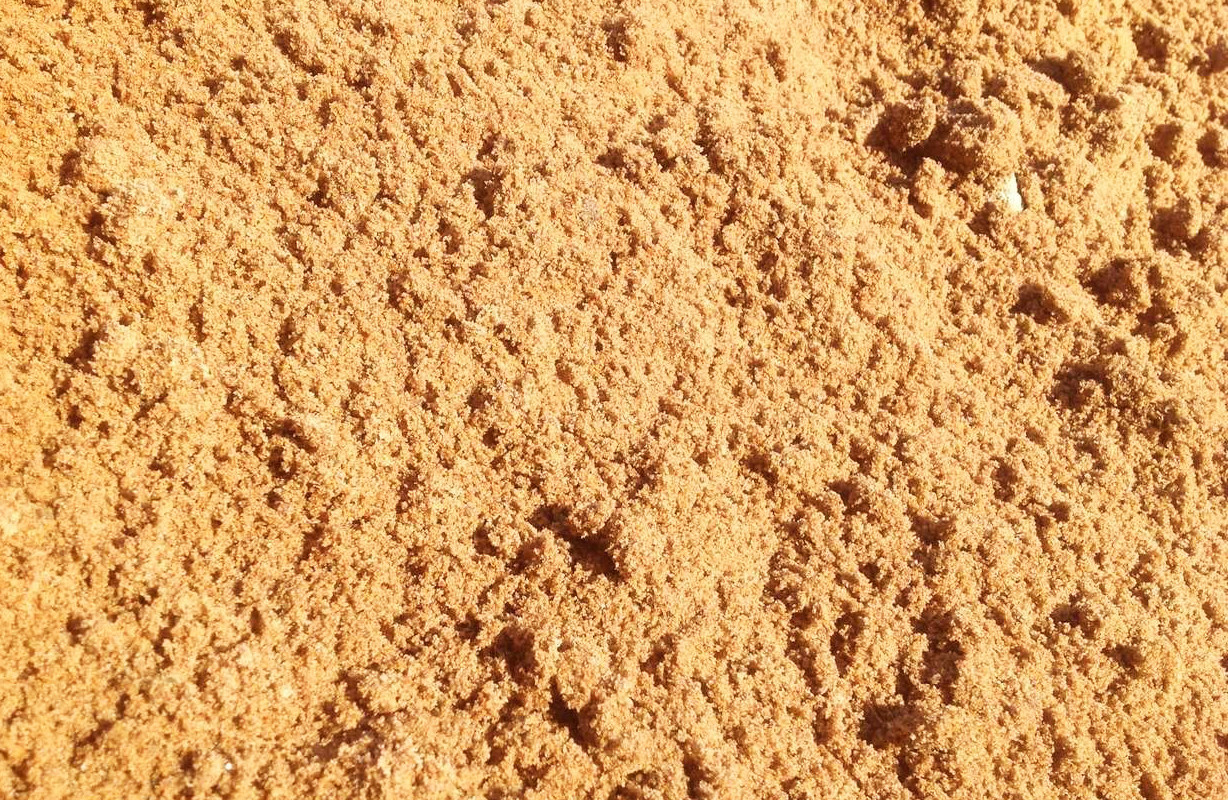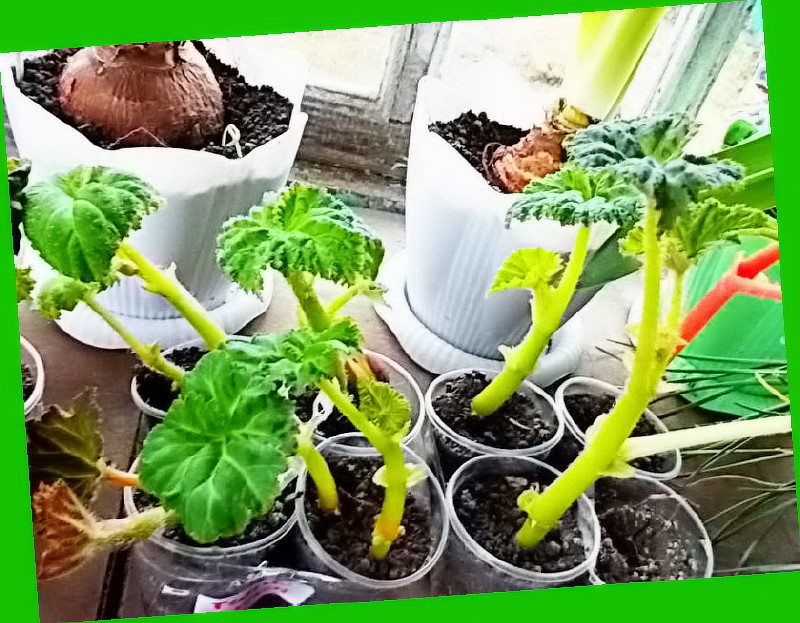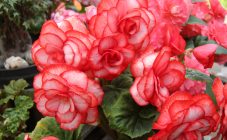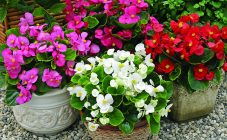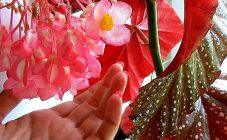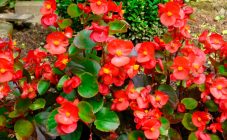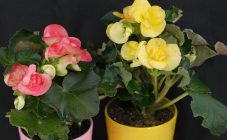Content:
Tuberous ampelous begonia began to be in demand among domestic agronomists relatively recently. This is due to its many advantages, for example, large leaves of bright flowers, an attractive bush shape, lush flowering and a wide variety of colors. In care, she is picky, even a novice florist can grow her.
Ampelous begonia: general description
Ampelous begonia is a tuberous perennial plant with asymmetrical leaves and self-contained stems. The height, depending on the variety, can vary from 20 to 60 cm, the length of the leaves is no more than 20 cm. Belleconia salmon begonia stands out among its relatives with long hanging shoots, their length can reach 1 m. It has an alternative name - drooping begonia.
The vast majority of species and varieties of plants have rich colors of buds, the diameter of the inflorescence is 5-10 cm.
The plant loves the hot and humid climate of the tropics and subtropics; in the wild, it is most often found in Asia, India, South America and Africa. For the first time in Europe, they learned about this plant at the end of the 17th century.
As a rule, flowering begins in the middle of summer and lasts until the first frost, but this is possible only under favorable weather conditions and subject to the rules of agricultural technology. At home, you can contemplate flowering throughout the year.
Types and varieties
The most common varieties are:
- Bolivian ampelous begonia is a variety, a characteristic feature of which is the aspiration of the shoots upward, but when their length reaches 30 cm, they attractively fall down, forming a floral multi-tiered cascade;
- Begonia Santa Cruz - growing it does not give the agronomist much trouble. Rapid development. The plant is spreading, forms numerous shoots, the average length of which is 40 cm. Inflorescences are formed in red-orange and fuchsia colors.
- Begonia Bellekonia Chardonnay is a creeping, unpretentious culture, during flowering, numerous bright red flowers are formed, they are characterized by a bell-shaped shape;
- Begonia Chardonnay - the variety differs in spreading, shoots up to 50 cm long are formed. It blooms from mid-summer until the first frost. Inflorescences are white, red, pink and orange.
- Begonia Pink fung is a bushy tuberous plant, the height reaches no more than 20 cm. During flowering, a large number of pink inflorescences are formed. Subject to agrotechnical rules, it blooms magnificently and for a long time. The main feature of the variety is its unpretentiousness in cultivation.
- Begonia Illumination is a powerful plant, the length of the shoots can reach up to 0.8 m. The flowers are large, their diameter can vary from 8 to 12 cm. An adult culture can take up to 1 meter of area in diameter. Grows willingly in shade and partial shade.
Ampelous begonia: planting and care at home
Ampelous begonia is a plant that, when optimal conditions are created for it, will willingly grow in open ground, as well as in hanging pots at home. Planting and caring for a crop does not require special knowledge, skills and effort.
Before planting, it is necessary to successfully select a site and prepare a soil mixture. The most suitable composition is turf, sand and leafy soil.
A suitable time for planting seeds is December or January, therefore, it is recommended to prepare the soil mixture in advance, before the time until the ground is frozen. If the agronomist is deprived of the opportunity to independently prepare the substrate, you can purchase a ready-made one in the store.
If we are talking about reproduction not by seed, but by tuberous, then before planting, the cutting must be stored in a damp and warm place. The lower part of the tuber should lie on a warm, damp cloth, and then stand in a warm and well-lit place. Soon after small white roots have formed on the tubers, the plant can be transplanted.
In the container, you should first moisten the substrate abundantly, the tubers are planted with the part where the roots were formed. The tuber is sprinkled with soil on all sides, but not completely. The top of the planting material should be located on top until the first shoots appear.
The plant is planted in a permanent place when the soil outside warms up enough. As a rule, this is the second or third decade of May. It must be borne in mind that the surface layer of the soil always dries quickly, so the tubers need to be properly deepened into the soil. The most suitable immersion depth is 1-2 cm. The earth must have a rich chemical composition and be fertile.
If you plant one tuber in each pot, then the diameter of the container should not exceed 15 cm. And also, it should not be deep, due to the fact that the plant has a superficial root system. Begonia does not like acidified soils, and in deep containers, the lower layers of the substrate are always subjected to chemical processes. At the bottom of the container, there must be drainage, which will allow excess moisture to be removed from the soil. The material from which the pot is made does not play much, it is important that there are holes in the bottom, at least 5-6 pieces.
Begonia care
All varieties and varieties of plants like a lot of sunlight, but the light should be diffused so as not to cause burns. At home, it is better to choose a place where the rays of the morning and evening sun will not fall on the culture. If the culture is deficient in light, soon the leaves will begin to fade, wither and not see lush flowering for sure.
The optimum temperature for the full development of begonia is + 18-20 degrees. A slight decrease in temperature is acceptable. In summer, containers with a houseplant can be taken out into the street, balcony or veranda, but the place must be protected from wind, drafts, rain and direct sunlight.
Diseases and pests
Ampel begonia has a fairly high resistance to disease. Most often it is affected by gray mold, powdery mildew and bacterial spotting. For the prevention and treatment of these diseases, it is necessary to irrigate plants with special fungicidal and insecticidal solutions. You can buy drugs in specialized departments.
The most troublesome insects are the whitefly, aphids, and the soft scabbard.To combat them, special chemical preparations are also used; in case of severe damage, it is necessary to remove the affected plant fragments.
Reproduction methods
Ampel begonia can be propagated in several ways.
- tubers (when it comes to tuberous varieties);
- cuttings;
- seeds.
Seed method
The seed method of growing is perhaps the most troublesome and laborious, since the seeds are very small in size, easily dry out and rot. The soil is needed with a slightly acidic, close to neutral reaction. To prepare the correct soil mixture, you need:
- sand (1 part);
- sheet land (4 parts);
- sod land (1 part).
The best time to sow seedlings is the end of December-January, so you need to take care of the soil before the onset of frost. Before planting seeds, the soil in the planting boxes must be well moistened, and before filling the containers with earth, pour drainage at the bottom.
Spread the seeds evenly over the surface of the mixture and cover with foil or glass. After sowing, do not water - the water can drag the seeds under the ground and you can not wait for the shoots.
In the room where the seedling box is located, it is necessary to maintain a temperature of +25 degrees. Seed germination time is 8-25 days.
Propagation by cuttings
The plant reproduces rapidly by stem cuttings. When propagated in this way, the plant retains all species and varietal characteristics. The optimal time for cutting cuttings is spring, shortly after the plant wakes up. Such sprouts quickly take root and grow actively. If necessary, grafting ampelous begonia can be made throughout the year.
For propagation by cuttings, the stems of no more than 10 cm are cut off from the plant and placed in a container with clean water until the roots appear. As a rule, after one to two weeks, roots appear and the plant can be planted in a container with soil. For better survival, it is recommended to water the plant with warm water.
Dividing tubers
If more than seven shoots have formed on the tuber in winter, it can be divided into two parts. Therefore, subject to agrotechnical rules, two plants will grow.
A sharp and clean knife is used to divide the tuber. It is impossible to plant parts, it is necessary to allow the cut points to dry out a little, otherwise the likelihood of infection or pest damage significantly increases. The depth of the planting material in the soil should be no more than 2 cm.
Ampelous begonia is an unpretentious and at the same time attractive plant that even a novice agronomist can grow. Before purchasing seed, you must first familiarize yourself with all the features of growing a crop.

